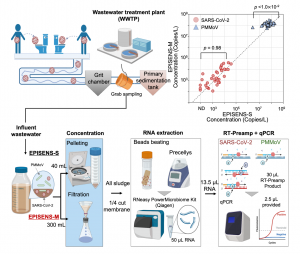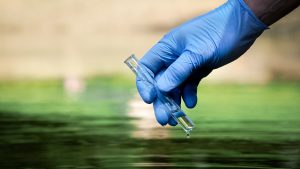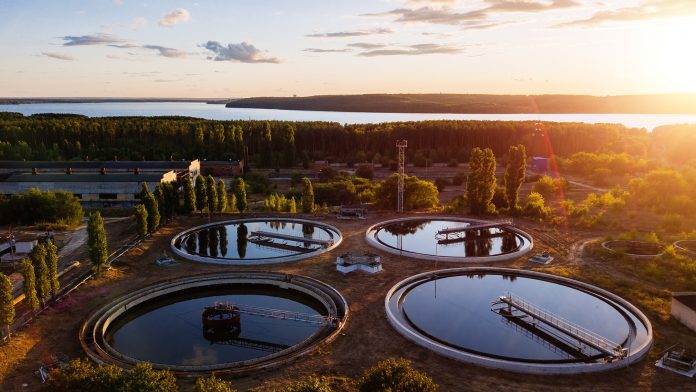Masaaki Kitajima, Associate Professor of the Faculty of Engineering at Hokkaido University, developed the first viable method of tracking COVID-19 through wastewater-based epidemiology, and now he has been recognised for his efforts with several awards.
Wastewater-based epidemiology (WBE) has played an integral role in the identification of SARS-CoV-2, the strain that causes the COVID-19 disease, within communities. Now, it shows further potential in planning and anticipating outbreaks and preparing for new pandemics.
Professor Masaaki Kitajima, Associate Professor of Hokkaido University, has been a pioneer in implementing WBE into Japan’s water treatment systems, has been promoting WBE as a means of detecting and monitoring outbreaks of COVID-19, and was instrumental in its use in the 2020 Tokyo Olympic and Paralympic villages. In 2023, Professor Kitajima won an award at the sixth Japan Medical Research and Development Awards, as well as a Japan Open Innovation Prize (JOIP) for this groundbreaking work, which will likely go on to be widely used throughout Japan and potentially the world.
Adapting WBE for the COVID-19 pandemic
During the pandemic, massive strides were made in WBE and its implementation. Professor Kitajima and his team spearheaded the research, which offered a system that could mass-detect COVID-19 in a population for a much smaller price than individual testing would. When the COVID-19 pandemic broke out, the team at Hokkaido University already had a system that could detect pathogens of SARS-CoV-2 in wastewater. Yet, there was the drawback that the system required solid matter and undiluted wastewater. While this system could be implemented into wastewater systems, it would not consider the effects of things such as rainwater or the treatment of wastewater, which would diminish the effects. Therefore, they needed to innovate.
The original method involved creating pellets from wastewater via low-speed centrifugation, but instead, the team tried using filters to sift the SARS-CoV-2 RNA from diluted wastewater. This RNA was then taken from the filter and amplified, before it was put through Polymerase Chain Reaction (PCR) tests to detect it. This new method was effective and dubbed Efficient and Practical Virus Identification System with Enhanced Sensitivity for Membrane (EPISENS-M).

Over the next two years, this method was tested every week with samples taken from wastewater treatment plants and compared with the regular clinical surveillance data to test its ability to detect the rise of COVID-19 cases.
Professor Kitajima said: “EPISENS-M was able to detect SARS-CoV-2 RNA in wastewater with more than 50% accuracy when new cases were still less than one in every 100,000 residents.”1
Furthermore, the data taken showed that people infected with the disease would shed the virus five days before clinical testing would report their infection. So not only could the EPISENS-M method show a larger picture of community infection, but proper implementation could also offer a prediction on the number of cases that would arise in any given community almost a week in advance.
The future of WBE
Building on this, Kitajima and his team have developed a mathematical model to predict the number of cases of COVID-19 five days in advance, using the data that this method acquired along with clinical testing data. The implications of this were, and still are, massive. For example, in its use within the Olympic and Paralympic villages, the data was used to influence the infection control measures taken while the athletes stayed there. The data can be used to indicate what measures should be taken and to what extent they should be put in place.
Accepting the JOIP on 15 February 2023, Kitajima said: “I believe that my academic research, which I have continued since my student days, has come to fruition in a form that is useful to society through industry-academia collaboration with Shionogi and AdvanSentinel. I would like to express my sincere gratitude to both of the joint awardees, all the collaborators, and other people involved for their contributions to the realisation of technological breakthroughs and innovations leading to practical applications.”2
On accepting the Japan Medical Research and Development Award, he said: “In the future, we will continue to develop technologies and promote wastewater-based epidemiology to contribute to building a society that is more resilient against infectious diseases.”3
Kitajima, along with his team at Hokkaido University, are continuing to develop WBE and hope to not only improve its effectiveness but speed up its implementation and reduce the cost of doing so.

On his future research into the method, Kitajima said: “We still need to understand how vaccinations, for example, affect viral shedding from infected individuals into the sewage system. Our approach also involves expensive equipment. So, further research is still needed to improve this method and to make it more cost-effective. Still, this research highlights the potential of wastewater-based epidemiology to forecast the number of clinical cases in a community even when fully notifiable clinical surveillance is not practised.”1
An example of the developing research into WBE is the COPMAN method, which is used to automate the processes involved in WBE as much as possible. Primarily, this means cutting down the amount of centrifugation required. COPMAN enhanced the speed and effectiveness of the process, making it possible for a lab to analyse 576 samples per week.4 With more innovations like this, the team at Hokkaido University is set to make WBE an affordable, efficient, and easy-to-implement system regardless of place, and transform the world of disease tracking.
References
- Using sewage to forecast COVID-19 infections | Hokkaido University (hokudai.ac.jp)
- Hokkaido University’s Masaaki Kitajima wins a Japan Open Innovation Prize | Hokkaido University (hokudai.ac.jp)
- Hokkaido University’s Masaaki Kitajima wins a 6th Japan Medical Research and Development Award | Hokkaido University (hokudai.ac.jp)
- Near full-automation of COPMAN using a LabDroid enables high-throughput and sensitive detection of SARS-CoV-2 RNA in wastewater as a leading indicator – ScienceDirect
Please note, this article will also appear in the sixteenth edition of our quarterly publication.





